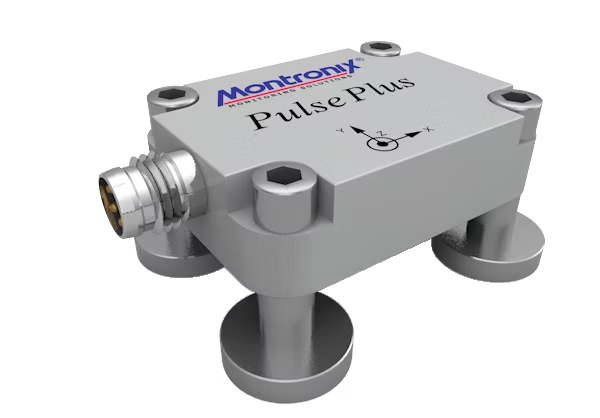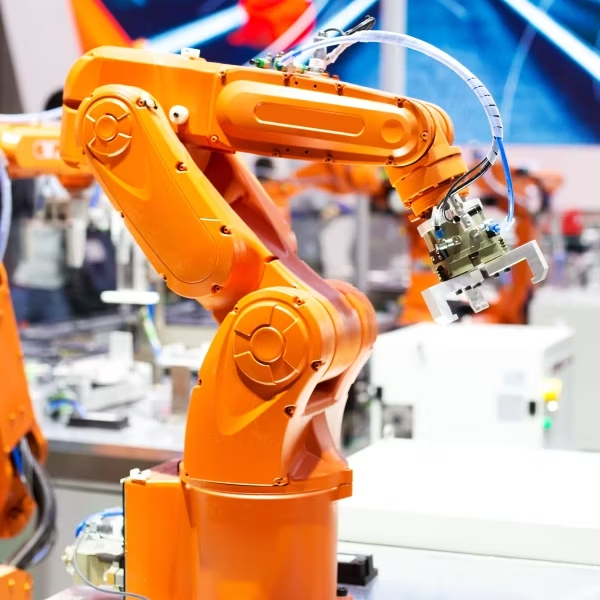Montronix acceleration sensors
Acceleration sensors from Montronix detect vibrations and collisions directly at the machine. They stop machining centers in under 1 millisecond and prevent damage to spindles or fixtures. At the same time, they provide three-axis real-time data for tool monitoring, process analysis, and maintenance.
Learn more now
What is an acceleration sensor?
An acceleration sensor measures the change in an object's velocity over time. It detects linear motion and vibrations, converts mechanical acceleration into electrical signals, and makes them analyzable. On this basis, you can identify the condition of tools, spindles, or entire machines at an early stage and prevent costly consequential damage.
Montronix acceleration sensors use modern MEMS technology that simultaneously captures motion in three axes (X, Y, Z), providing a complete picture of machine behavior.
The acceleration sensors from Montronix
All Montronix models, including Pulse Plus, Pulse M12 Plus, PulseNG, and PulseNG M12, measure acceleration simultaneously on the X, Y, and Z axes. This way, they capture vibrations from all spatial directions and deliver complete motion data. This three-dimensional acquisition is crucial for analyzing complex processes and for protecting machines in real time.

Pulse Plus

Pulse M12 Plus
Our solutions at a glance
Your benefits with Montronix acceleration sensors
Immediate collision detection
The evaluation unit reacts in less than one millisecond and immediately reports a collision to the controller. This allows you to stop machines in time, before serious damage occurs to spindles, tool holders, or fixtures. This saves high repair costs and secures your production availability.
Early wear detection
The sensors continuously monitor vibrations on tools and bearings. Even the smallest deviations from normal indicate emerging wear. This enables targeted maintenance planning and prevents unplanned machine downtime.
In-process quality assurance
Acceleration sensors detect the smallest vibrations that affect part quality. They report unstable processes immediately, enabling adjustments before scrap occurs. In this way, they ensure dimensional accuracy even during long runtimes and complex machining operations.
Robust integration in industrial environments
The acceleration sensors are compact, fully encapsulated, and protected to IP67. They operate reliably in dusty, humid, or oily machine environments. This makes them suitable for use in virtually all areas of the machining industry.
Where our acceleration sensors are used
- Milling centers and lathes: Monitoring of spindles and tools
- Grinding machines: Detection of unstable processes and tool wear
- Pumps and aggregates: Measurement of vibrations even in underwater operation up to 8 meters deep
- Robots and special machines: Analysis of complex movements in automated systems

We are happy to advise you
Do you want to deploy acceleration sensors in your production or start with a test first? Then talk to our team. We will advise you on selection, supply the appropriate evaluation unit, and provide a test setup on request.
Contact us nowFAQ: Frequently asked questions about acceleration sensors
Why is acceleration measured?
Acceleration measurements make movements visible that are crucial for machine operation. They allow you to detect collisions or imbalances before they cause damage. At the same time, displacement and vibration velocity can be calculated from the data, giving you a complete picture of the process. On this basis, you can plan maintenance, avoid failures, and ensure product quality.
What types of acceleration sensors are there?
Montronix uses MEMS sensors that are compact and capture motion on three axes simultaneously. Other variants include piezoelectric or capacitive sensors used for special applications. Piezoelectric sensors are suitable for high-frequency vibrations, while capacitive sensors measure slow movements very accurately. For everyday industrial use, MEMS sensors offer the best combination of robustness, versatility, and integration.
How do you install an acceleration sensor in machines?
You mount the sensors directly on spindles, axis modules, or machine tables. They are connected via M8 plugs to an evaluation unit such as IBU Plus or WiFi Box Plus. Installation is straightforward and does not require controller modifications. Older machines can also be retrofitted, which makes them particularly attractive for retrofit projects.
What problems can be avoided with acceleration sensors?
Acceleration sensors prevent damage caused by collisions, which can lead to high costs and long downtimes. They detect tool wear or bearing damage at an early stage, allowing you to react in time. At the same time, real-time monitoring reduces scrap by immediately reporting unstable processes. This ensures quality and extends the service life of tools and machines.


 DE
DE  EN
EN  IT
IT